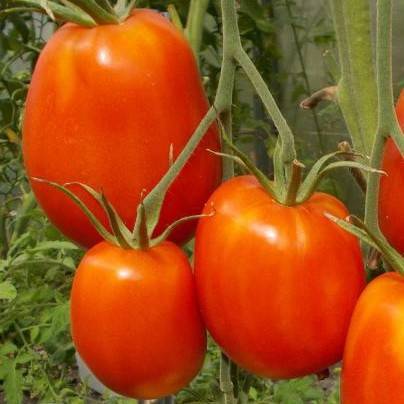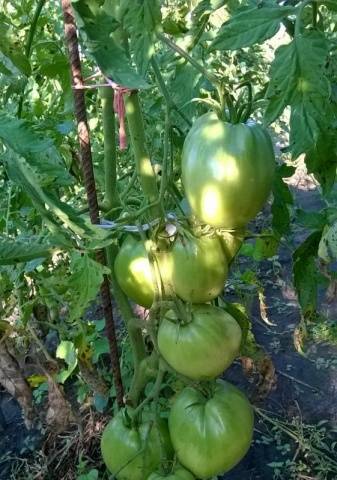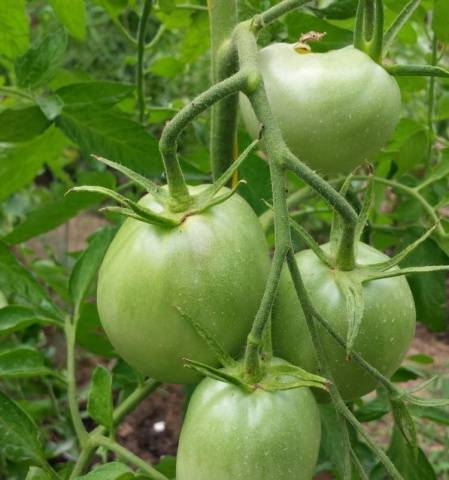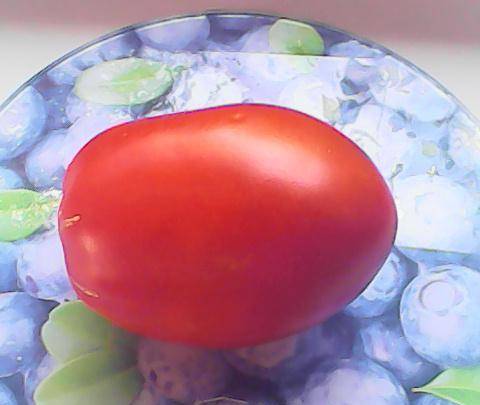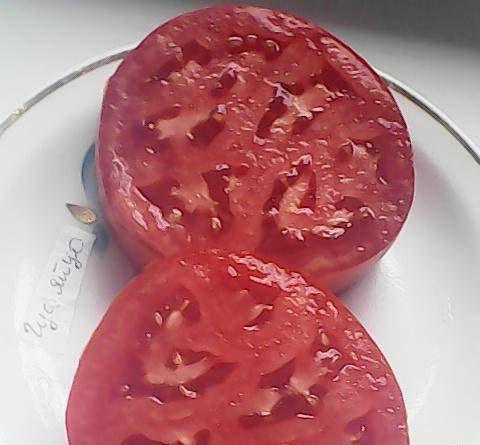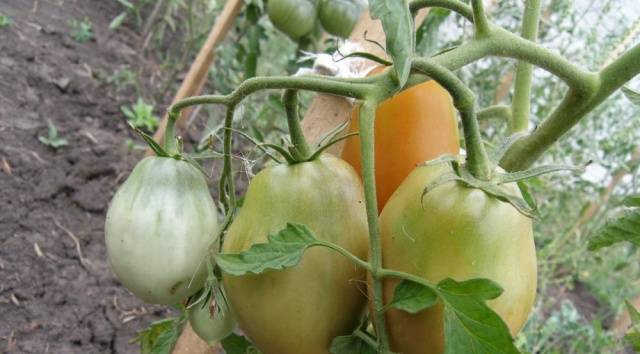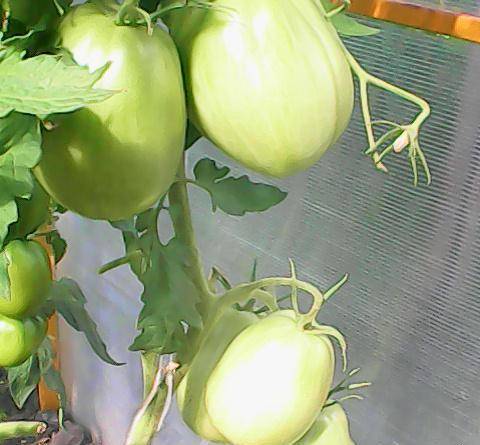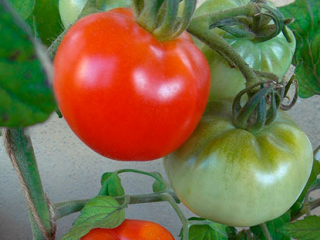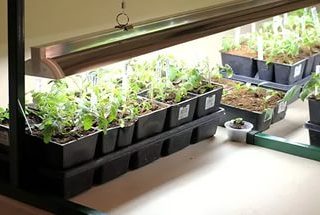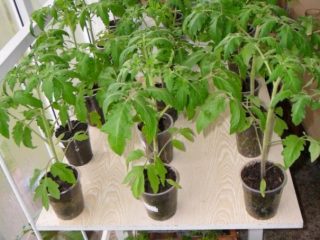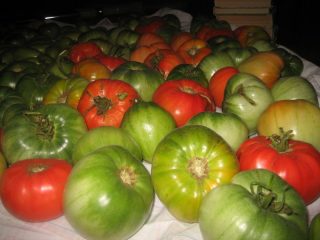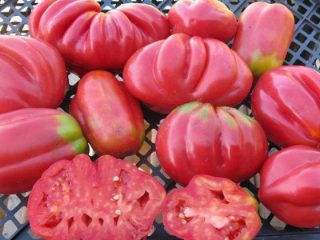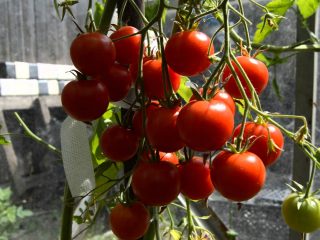Content
There are so many varieties and hybrids of tomatoes that are currently offered to gardeners for cultivation that they can satisfy every taste and requirement. There are varieties with a very unusual appearance that can show good results only in experienced hands. Others are quite suitable for beginners in gardening, who also live in regions that are not particularly suitable for growing tomatoes.
The Goose Egg tomato, a description of the variety and characteristics of which you can find in this article, is just one of these tomatoes. This variety appeared relatively recently, but has already gained popularity among gardeners due to its many interesting qualities, including its unpretentiousness in cultivation.
Description of the variety
The name of this variety is figurative, memorable, and quite accurately describes the appearance of tomatoes. Still, sometimes it is thanks to the zest in the name that the variety of certain tomatoes is remembered and remains in the memory for a long time, forcing a person to look for and buy the seeds of these particular tomatoes, and not other ones.
The Goose Egg tomato was born thanks to the efforts of Siberian breeders in 2010. True, until now the variety has not been registered in the State Register of Russia.
The bushes of this tomato variety can safely be classified as indeterminate. They are distinguished by strong branching and good foliage. Tomatoes have significant growth vigor and can grow up to two meters in height. As a result, gartering, shaping and pinching are absolutely necessary operations for this variety of tomato. Although in open ground the bushes grow smaller in size than in greenhouses.
The Goose Egg tomato is equally well suited for growing in greenhouse conditions and simply in open ground. Moreover, good results when grown in open ground conditions are obtained even in the Moscow region, the Urals and Siberia. Reviews from some gardeners indicate that the Goose Egg tomato showed even better results when grown in open-air beds than when grown in a greenhouse. In greenhouse conditions, it had worse fruit set and, as a result, lower yield.
The variety is characterized by complex clusters in which from 4 to 8 fruits are formed. Typically, the lower clusters produce more tomatoes, from six to eight.
The Goose Egg tomato is medium-early in terms of ripening. It takes about 100 days from full germination to the appearance of the first ripe fruits.
The yield is quite high and stable from year to year. It can amount to up to 7-8 kg of tomatoes per square meter. Usually there is a friendly return of the harvest.
There is no official data from the manufacturer on disease resistance for this tomato variety. But reviews from customers and those who planted this variety indicate that the Goose Egg tomato exhibits sufficient resistance to late blight and some viral diseases of tomatoes. Also being bred specifically for the harsh Siberian environment, it can withstand many adverse weather conditions.
Characteristics of tomatoes
Tomatoes of this variety have the following characteristics:
- The shape of the tomatoes is well reflected in the name of the variety - they actually somewhat resemble a large egg. But the shape can vary somewhat depending on growing conditions, and the surface of the skin can be either completely smooth or with significant folds at the base of the stalk.
- The fruits are initially green in color with a pronounced dark spot at the stalk. When ripe they turn orange-red. The stain disappears completely.
- Manufacturers characterize these tomatoes as having high pulp density, but consumer opinions differ on this point. Some agree with this assessment, while others believe that the flesh cannot be called dense, especially when fully ripe.
- The skin of tomatoes is very thin and can be easily removed from the fruit.
- Tomatoes could be called cream, but they are much larger in size than regular cream. On average, the weight of the fruit is about 200 grams, but in the upper clusters the weight of many fruits reaches 300 grams. Therefore, the Goose Egg variety is often classified even as a large-fruited tomato.
- Taste characteristics can be called good and excellent.Despite the fact that the manufacturer calls this variety of tomatoes one of the best for pickling, they are also quite good for fresh consumption in salads.
- Due to its dense consistency and significant amount of dry matter, the fruits of this varieties suitable for drying, drying and freezing.
- The safety and transportation of fruits is very high. Can be stored in cool conditions for up to 45 days.
- Tomatoes ripen very well when picked green. Although, according to some reviews from gardeners, fully ripe tomatoes of this variety do not last as long as we would like.
Features of cultivation
The Goose Egg tomato, having an unusual shape, large size and good yield, is very unpretentious to growing conditions. Therefore, it can be an ideal choice for beginning summer residents and gardeners. It can be sown for seedlings throughout March.
Otherwise, growing seedlings is no different from other tomato varieties. For growing in open ground, you can form plants into three or four trunks and in this case plant no more than three bushes of this variety per square meter. When cultivating a Goose Egg tomato in a greenhouse during formation, it is advisable to leave no more than one or two trunks. You can plant it in a greenhouse a little thicker - up to 4-5 plants per square meter.
As mentioned above, staking the stems and even the fruits in the upper part of the bush is mandatory, since tomatoes may fall off when ripe due to the gravity of their own weight.
The variety has a good response to fertilizing with complex mineral fertilizers, although the use of organic matter is also acceptable.
You can harvest the harvest starting in August; as a rule, tomatoes ripen quite quickly.
Reviews from gardeners
Reviews from those who grew the Goose Egg tomato are quite contradictory, although they are mostly positive. Perhaps this is due to the still unsettled standards of the variety, or ordinary misgrading.
Conclusion
Goose egg tomatoes are distinguished not only by their good taste and yield, but also by their unusual appearance. It is rare for raceme tomatoes to be so large in size. And their resistance to various weather conditions makes them an ideal variety for beginners.
